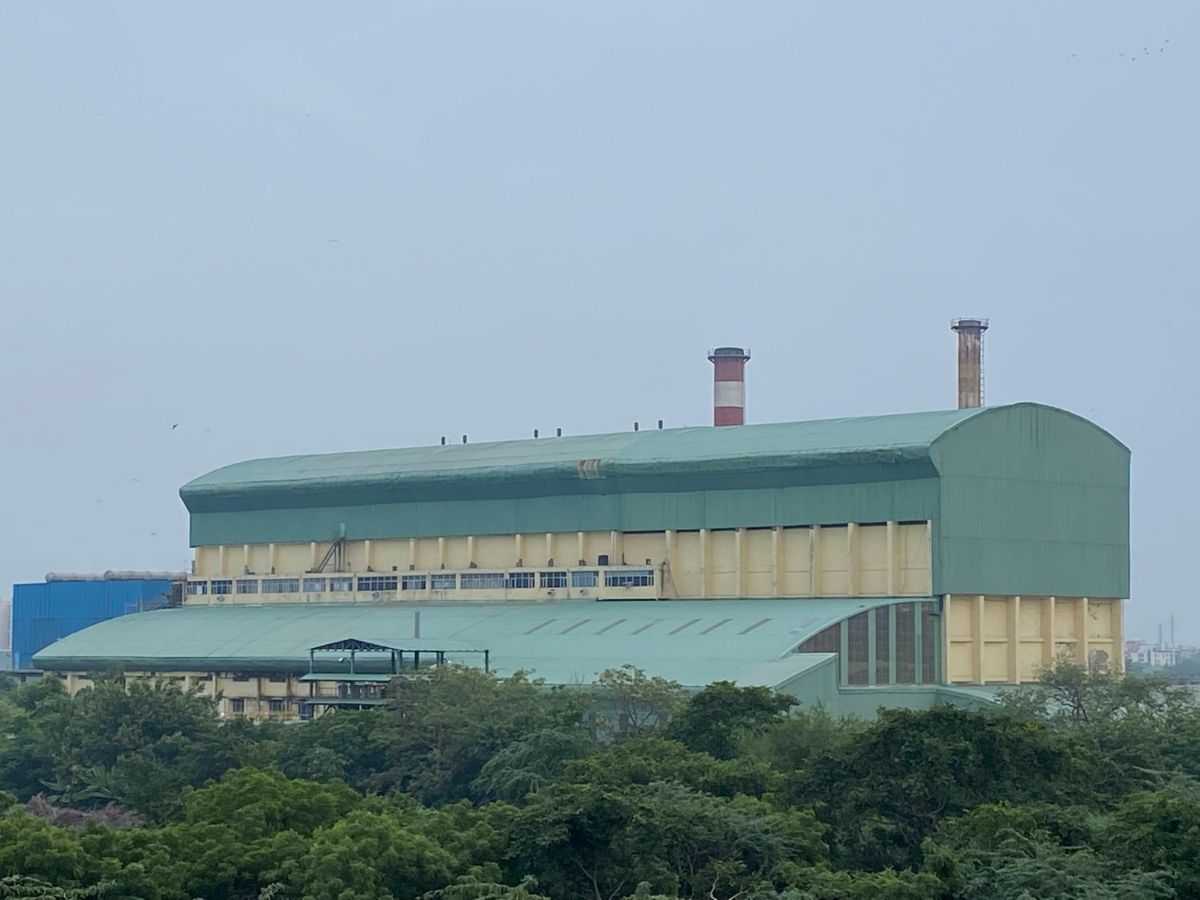Every fourth household in the locality is suffering from respiratory diseases and cancer following the commissioning of the Waste to Energy Plant at Timarpur Okhla, say residents of Sukhdev Vihar.
“The agencies are processing the landfill waste at the cost of human lives in the national capital. The people of the locality have been cheated by the government and the multiple agencies working in the city,” said Upendra Bhardwaj, president of Resident Welfare Association, Pocket-B, Sukhdev Vihar, while speaking to Patriot.
“In the past three years, we have lost three individuals who succumbed to cancer because of this WtE plant, which is only 45-50 metres away from the residential colony, in total violation of the law,” Bhardwaj said.
“A plant should be located near a landfill, and there is no landfill any where near Sukhdev Vihar,” said another resident, on the condition of anonymity.
“Also, a WtE plant should be located 500 metres from residential areas, while this plant is only 40 metres away, causing serious health issues to residents. The plant has been repeatedly fined by DPCC for releasing toxins into the air. Winter months are bad, and the plant should be covered by GRAP.”
“Whenever the city’s air quality worsens, my father has to rely on antibiotics,” informs another resi dent of Pocket A, Sukhdev Vihar.
The 55-year-old father suffers from recurrent adenoid issues each winter when pollution spikes.
“I also struggle with chronic sinusitis,” he tells Patriot. “The smoke from the nearby waste-to energy plant that enters our home only aggravates the problem.”
“The thick smoke from the plant’s burners worsens the air quality and triggers respiratory problems, especially in senior citizens, who make up over 40% of our community.”
A troubling legacy
The Timarpur Okhla waste-to-energy plant, India’s first and largest at its inauguration in 2012, was originally presented as a solution to Delhi’s growing waste problem.
The project traces back to 2008 when Jindal Urban Infrastructure Ltd (JUIL) was awarded a letter of intent to develop the plant under a Public-Private Partnership (PPP) model. According to a report by The Economic Times, JUIL won an open tender to operate the plant for 25 years.
Also read: Are sensors meant to measure Delhi’s air pollution data really reliable enough?
The plant’s official website claims it is equipped with a flue gas cleaning system and proper combustion processes to maintain emission standards. It also has a leachate treatment facility.
In 2011, the Delhi government gave the plant the green light, pending approvals from the Delhi Pollution Control Committee (DPCC).
The plant has a capacity to generate 23 megawatts (MW) of power from 1,950 metric tonnes of municipal solid waste (MSW) daily.
Currently, it processes around 1,800 metric tonnes per day, producing 16 MW of electricity, along with ash and gas emissions.
Best method available
The Okhla plant is one of four operational waste-to-energy facilities in Delhi. The others are located in Ghazipur, Narela-Bawana, and Tehkhand. Collectively, these plants process 5,250 metric tonnes of municipal solid waste daily and generate 52 MW of electricity.
According to a senior Municipal Corporation of Delhi (MCD) official privy to the developments, the civic body is converting waste to energy due to reduced wastage.
“This is effectively reusing the waste products without any harm caused to the environment as such. Sometimes it’s converted to biofuel as well, so whatever waste gets dumped here is eventually used up as well,” he said.
He added that although some environmentalists have raised alarm over such plants causing illness, this method is the best that they have at present.
Legal battles and limited relief
However, for residents of Sukhdev Vihar, Haji Colony, Sarita Vihar, Jasola, New Friends Colony, and other nearby areas in South East Delhi, the plant has been a source of ongoing distress. These communities have been fighting a legal battle since the plant’s inception, seeking its relocation due to health concerns.
Despite multiple petitions and court cases over the years, residents say the government has taken little action, leaving them to bear the con sequences.
Residents of Sukhdev Vihar first filed a writ petition against the proposed plant in the Delhi High Court in 2009, which was dismissed. A subsequent application for review was filed, but in 2013, the court transferred the case to the National Green Tribunal (NGT).
In 2017, the NGT allowed the plant to continue operating, despite claims from petitioners about the release of harmful toxins like dioxins, furans, and heavy metals. The tribunal directed the plant to pay Rs 25 lakh as environmental compensation for previous violations, but rejected the plea for relocation.
The World Health Organisation (WHO) identifies dioxins as “highly toxic” and linked to reproductive issues, immune system damage, hormone disruption, and cancer. Furans can also lead to liver damage and cancer.
Unhappy with the NGT ruling, residents appealed to the Supreme Court in 2017, where the case was scheduled for a hearing soon.
In 2021, the DPCC fined Delhi’s three waste-to-energy plants – Okhla, Narela-Bawana, and Ghazipur – Rs 5 lakh each for failing to meet environmental norms.
Patriot attempted to contact the Timarpur Okhla Waste Management Company Ltd, which operates the Okhla plant, but the office landline was unreachable.
Severe health risks
According to Dr Ritu Saxena, Deputy Medical Superintendent, Lok Nayak Hospital, “Waste-to-energy plants emit several harmful toxins, including dioxins, furans, particulate matter, and heavy metals, which pose significant health risks to the sur rounding population. Dioxins and furans, in particular, are highly toxic compounds. When waste is burned at these facilities, these chemicals are released into the air, where they can be inhaled or settle on crops and water sources, entering the food chain. Long-term exposure to these toxins is linked to serious health problems.”
Dr Saxena explained that dioxins and furans have been classified as carcinogenic by the WHO, with pro longed exposure increasing the risk of cancers, particularly lung and liver cancers. She noted that these toxins can disrupt the endocrine system, leading to reproductive and developmental issues, especially for children and pregnant women. Additionally, she mentioned that dioxins and furans can suppress the immune system, making individuals more susceptible to infections.
Also read: The unsettling history of 33 Shamnath Marg: Once abode of Delhi’s Chief Ministers
She further stated that inhalation of particulate matter and nitrogen oxides released from waste-to-energy plants can exacerbate respiratory conditions like asthma, bronchitis, and chronic obstructive pulmonary disease (COPD). These particles can penetrate deep into the lungs and bloodstream, causing inflammation and potentially leading to cardiovascular diseases such as hypertension and heart attacks.
Dr Saxena also highlighted that heavy metals like lead, mercury, and cadmium, emitted from these plants, can accumulate in the body over time, damaging vital organs like the kidneys and liver. She pointed out that children and the elderly are particularly vulnerable to these pollutants due to their weaker immune systems and longer exposure periods.
She concluded by emphasising that the health impacts of living near a waste-to-energy plant are severe and long-lasting, calling for preventive measures such as regular monitoring of emissions and relocating plants away from residential areas.





